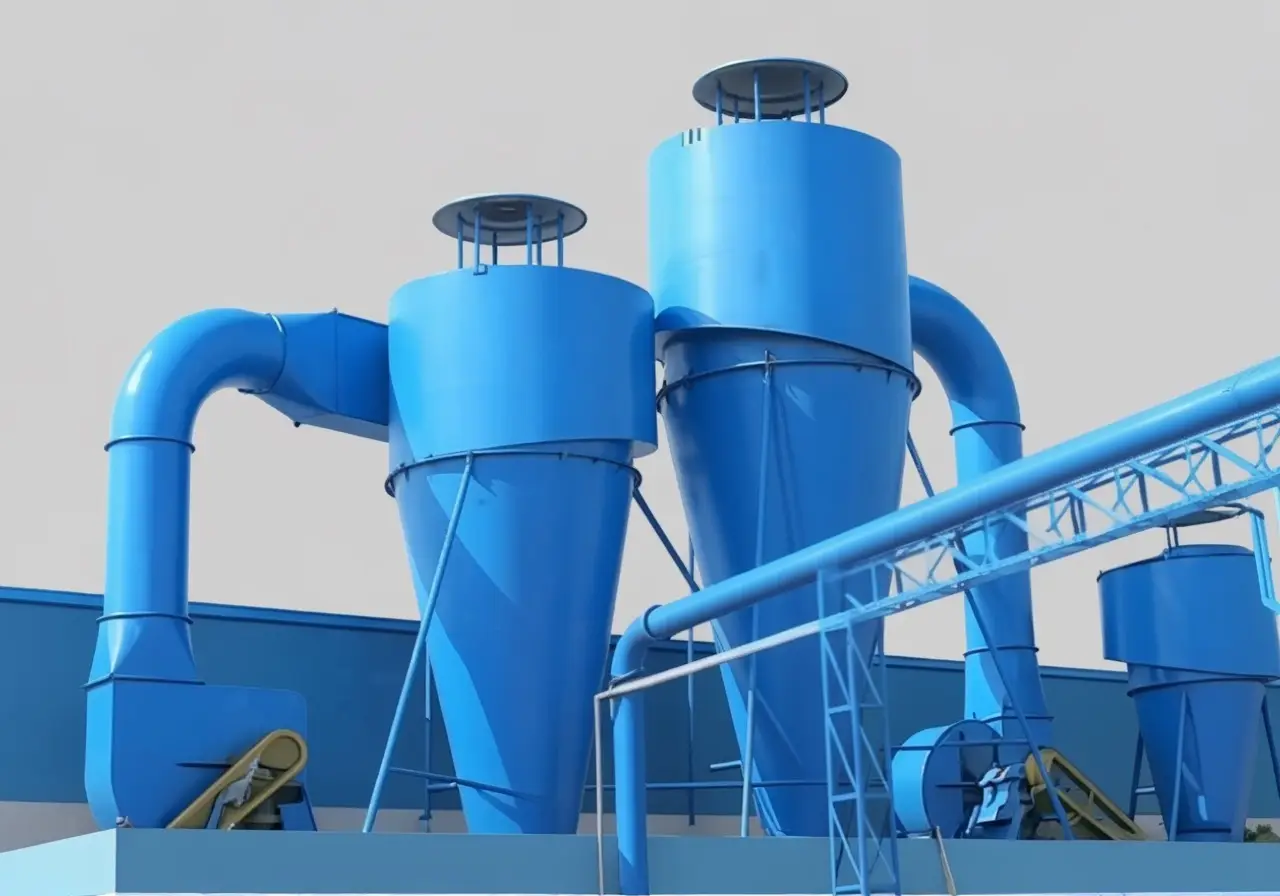Industrial Cyclone Dust Collector
An industrial cyclone dust collector, also known as a cyclone dust filter or industrial cyclone separator, is a crucial dust collection device widely used alongside baghouse dust collectors and electrostatic precipitators (ESP) in cement production lines. It plays an important role in collecting and removing dust generated during raw material crushing and clinker production processes in cement plants.

Industrial Cyclone Dust Collector
Applications in Cement Plants
Cyclone dust collectors are employed across multiple cement plant systems:
Coal Mill System: Collects coal dust generated during fuel preparation, helping maintain a clean production environment.
Clinker Preparation System: Captures dust from crushing equipment, material handling, and internal combustion engines.
Kiln System: Removes exhaust gases and particulate matter produced during clinker formation.
Cooling System: Prevents clinker dust from escaping during the cooling process, reducing environmental pollution caused by high-velocity airflow.
Manufacturing Process of Dust Removal Equipment
DMPCR’s dust collection equipment manufacturing involves a comprehensive process: material cutting according to design drawings, dimensional inspection, precision welding, assembly of welded parts, comprehensive quality inspections, trial runs, painting and finishing, delivery, on-site installation, customer acceptance, and project completion. This ensures top quality and reliable performance.
Advantages of Industrial Cyclone Dust Collector
The industrial cyclone dust collector is especially effective for purifying dust with particle sizes larger than 5 micrometers and high density. However, it is not well suited for highly adhesive dust. Key benefits include:
No moving parts, resulting in easy management and low maintenance demands.
Compact size and simple structure with lower cost compared to other dust removal equipment for the same airflow.
Scalability by using multiple cyclone collectors in parallel for large airflow rates without loss of efficiency or increased resistance.
Ability to withstand high temperatures up to 400°C, and even higher when constructed with special high-temperature-resistant materials.
Wear-resistant linings can be added to manage abrasive dust-containing exhaust gases effectively.
Specifications
The industrial cyclone dust collector uses centrifugal force generated by swirling airflow to separate dust particles from dirty air. It features a conical body and slanting bottom to facilitate dust collection. The equipment requires a dust concentration below 50 g/m³, inlet gas velocity above 18 meters per second, and dust particle sizes below 1 mm for optimal performance.
Due to its simple structure and medium resistance, the cyclone dust collector requires no auxiliary equipment and is easy to operate and maintain. It is widely applied in industries such as mechanical processing, petrochemicals, metallurgy, power generation, and building materials. When outfitted with proper internal components, it can handle abrasive or corrosive dust, though it is unsuitable for sticky dust. Cyclones are ideal for general dust removal and heavy material recovery from industrial exhaust gases.
Working Principle
Dusty air enters the cyclone through the inlet and spirals between inner and outer cylinders. This spiral creates strong centrifugal forces that separate dust particles from the gas stream by pushing them against the walls of the cyclone. The clean gas then flows upward through the central inner cylinder and exits the collector, while the dust particles settle by gravity into the hopper below for disposal.
The diameter of the cyclone’s cylindrical body critically influences dust separation efficiency. A smaller diameter increases centrifugal force by reducing the radius of rotating airflow, improving particle capture. However, overly small diameters can cause blockages and allow particles to escape due to close proximity to the exhaust pipe. Selecting an optimal diameter balances dust capture with operational stability.
For high airflow applications, multiple cyclone dust collectors can operate in parallel to handle combined volumes efficiently. While this increases manufacturing complexity and material usage, it prevents overloading single units and maintains low resistance. Careful design ensures that the number of parallel units does not cause excessive airflow blockage or pressure drop.
